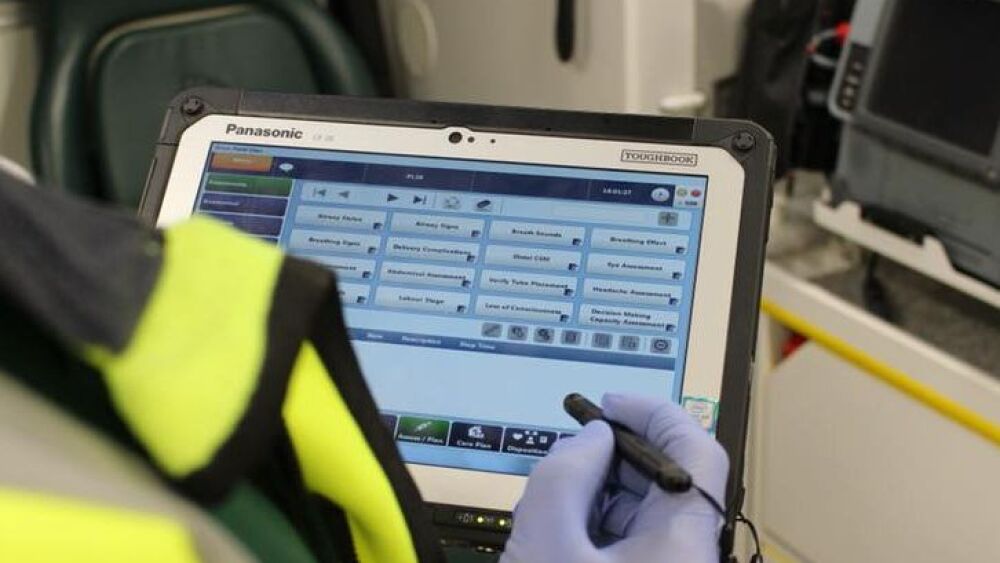
Emergency medical services (EMS) are a vital part of the medical operations of hospitals, urgent care centers, and other related healthcare facilities. They are usually the first healthcare practitioners to arrive at the scene, providing crucial first-aid treatment and stabilization for patients who are needed in times of crisis.
One thing about an EMS provider’s line of duty, however, is that their job is already very hectic and subject to a lot of pressure. That makes it all the more important for them to have the right training and tools to streamline and accurately fulfill the other parts of their job—one of which pertains to writing reports.
To that end, below are some protocols for further enhancing your patient care reporting system for improved efficiency within your team:
1) Don’t Let Paramedics Settle for Vaguely Detailed Reports
Any paramedic must remember that the patient care report, or PCR, should provide a complete overview of what transpired during the response. This includes when the call was made, the patient’s description of their emergency, how the location pick-up went, and the patient’s condition during the transfer. As a decision-maker for your department, encourage your team members to be specific with the details rather than just writing down vague notes that may not be able to convey the whole picture.
A good rule of thumb to practice here is this: was the PCR able to portray a full narrative of the response? Anyone reading the report—especially those tasked with the patient’s care after their transfer—should be able to have a clear grasp of the call through the details included. This may include a timeline of the incident, any changes in the patient’s condition, and what first aid was administered. Incomplete PCRs may confuse hospital and billing staff when the report is reviewed later on, so EMS staff should strive to be critical of the details when writing them.
2) Considering Investing in an EMS Management System
If your facility constantly finds itself overwhelmed with the task of accomplishing reports, then now may be the right time to invest in dedicated patient care report software. Healthcare technology companies like EMS solutions provider Traumasoft can help you streamline the response workflow through features like an ePCR, computer-aided dispatch (CAD) system, digital record keeping, billing automation, and much more.
Since everything is digitized, it will be possible to collect a lot of information in an accurate and efficient manner in just a few clicks. Metrics from your EMS management system can help identify weaknesses in your operations, immediately allocate resources to where they seem to be lacking, and help you and your EMS staff gain an overview of your day-to-day workflow at a glance. This will not only help your own operations but can also prove to be invaluable for any organization doing healthcare research and development as well.
3) Train and Re-Train Your Staff in the Art of Concise, Yet Clear Communication
If EMS staff are rushing to finish up a PCR, it might be tempting to start using shortened phrases or abbreviations, thinking it will help save time. However, sometimes these “time savers” can end up only causing more trouble down the communication line. As these reports contain crucial information for both your organization and other healthcare practitioners who’ll handle the patient, make sure the details are written in a clear and easily readable manner.
That means refraining from using too many abbreviations, especially if they’re not commonly used in healthcare parlance. Conciseness is indeed important in a PCR, but a staffer shouldn’t have to sacrifice clarity just to save themselves from writing a few more extra lines. Anyone preparing a PCR must remember that they won’t be the only ones reading this report; other healthcare professionals and people outside the industry, such as the court or insurance providers, may need access to it, too. Train and re-train your staff as necessary to sharpen their skills, and ensure that readers will be able to review a well-written PCR by someone who’s done the job right the first time.
4) Make It a Common Practice to Accomplish the Report as Soon as Possible
Responding to emergencies is taxing in many ways, so it’s understandable that some EMS professionals feel the need to put off writing their reports until they feel sufficiently rested first. However, the most ideal time to accomplish a PCR is as soon as possible, when the details are still fresh in one’s mind. This allows a paramedic to fill in the needed information with more accuracy compared to if they did so later, wherein a detail or two might have already slipped from their minds.
If a staff member is too pressed for time to finish up a report before their next call, encourage them to jot down quick notes at the very least so they can jog their memories when they write the PCR later. This way, the accuracy of the report will not be compromised despite the delay.
5) Ingrain Proofreading and Rechecking as Habits
After a paramedic is done with their report, it’s not enough to just give it a cursory glance and then submit it right away. Keep in mind that the details here are going to be important moving forward, both for the patient’s ongoing care and for your EMS organization, especially when it comes to settling reimbursements. Hence, you cannot afford to make mistakes that may jeopardize either of the two.
Consider letting staff allot at least five minutes to go over their reports. Suggest that they double-check each report’s accuracy and for possible grammar or typographical errors. While the former is obviously a top concern, the latter is just as important because confusing grammar can lead to miscommunication or, at worst, even judgment errors down the line.
The ePCRs that EMS providers are in charge of producing are instrumental to the quality and thoroughness of care that health professionals can give them, as well as in core processes like reimbursement. Ingrain the value of efficient patient care reporting in your staff, and your organization can continue to do the lifesaving work that is key to improving patient outcomes.





